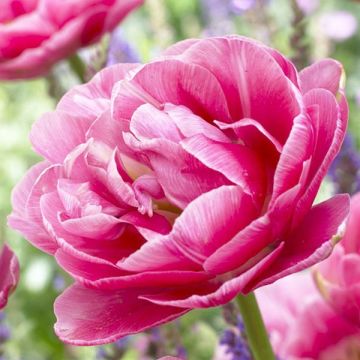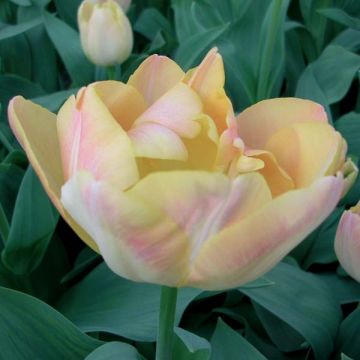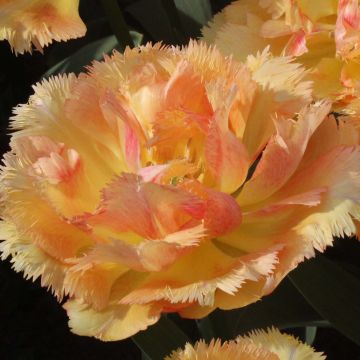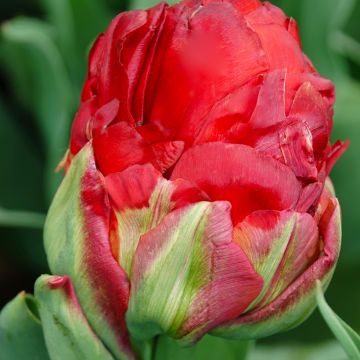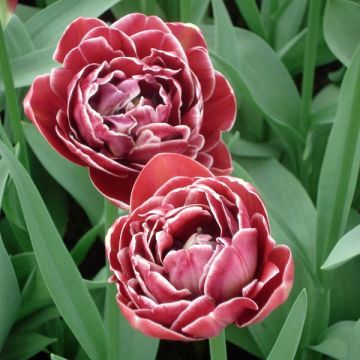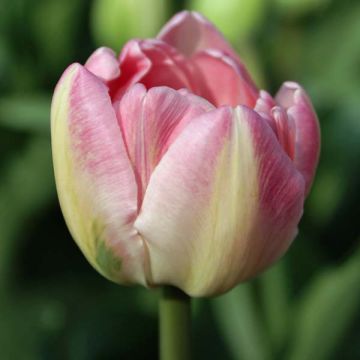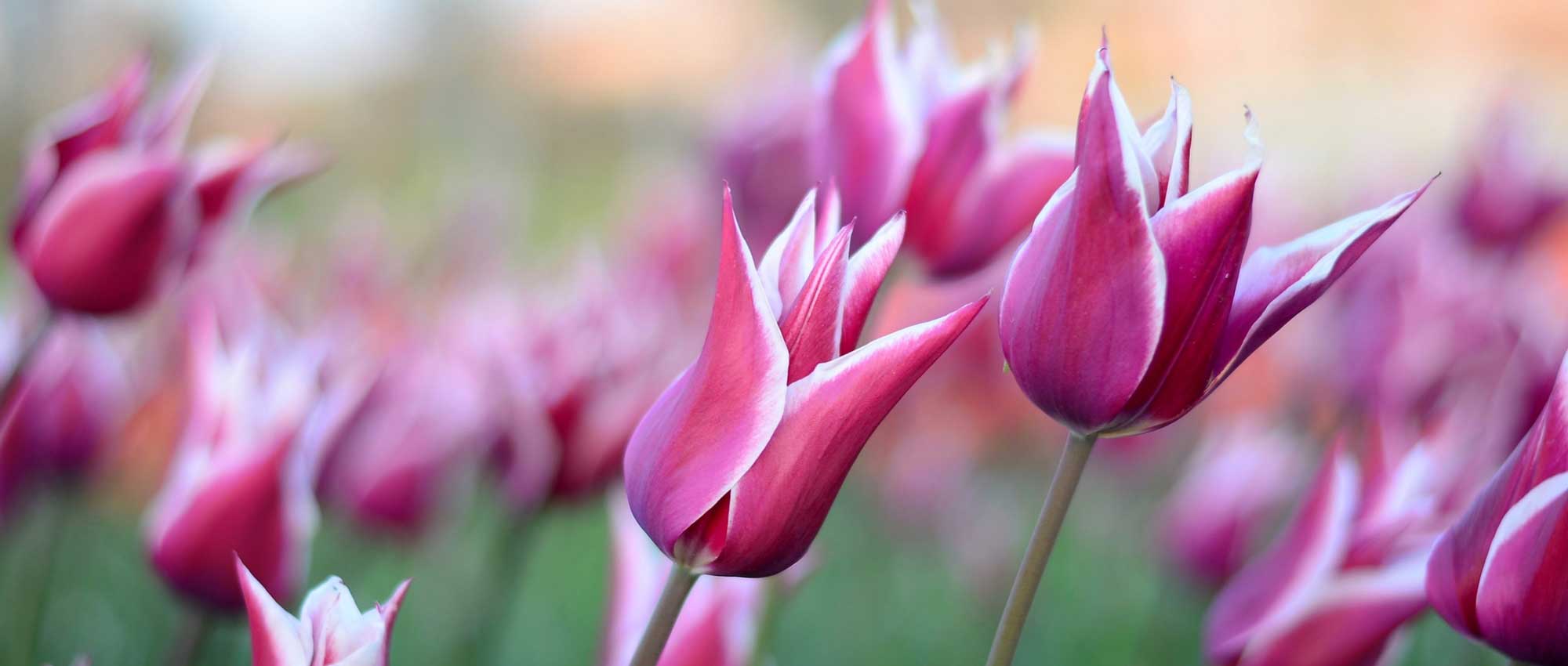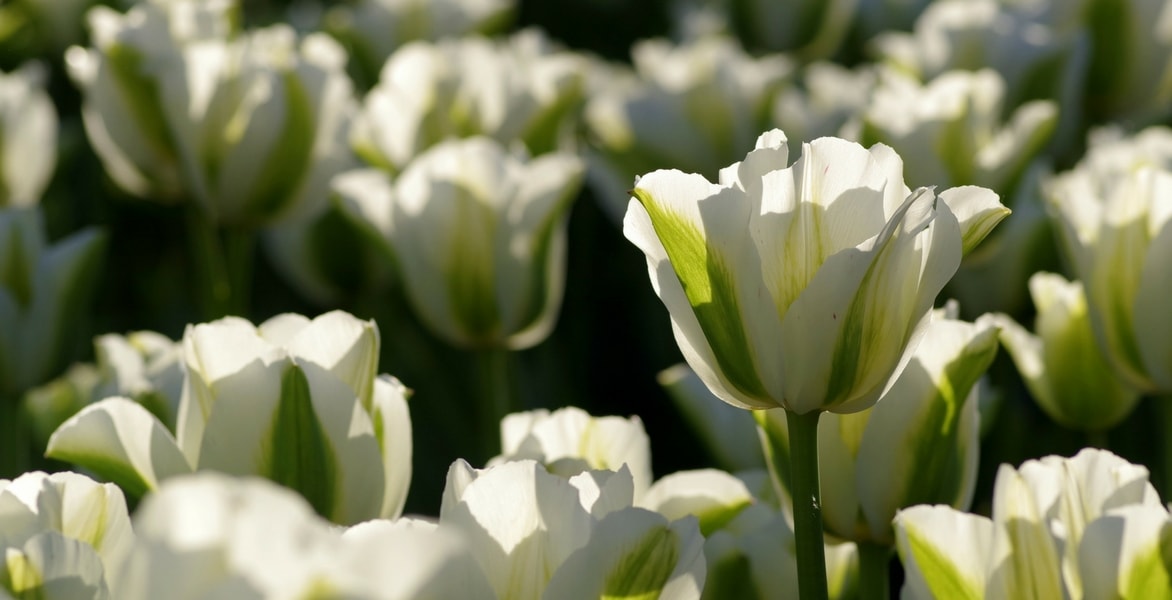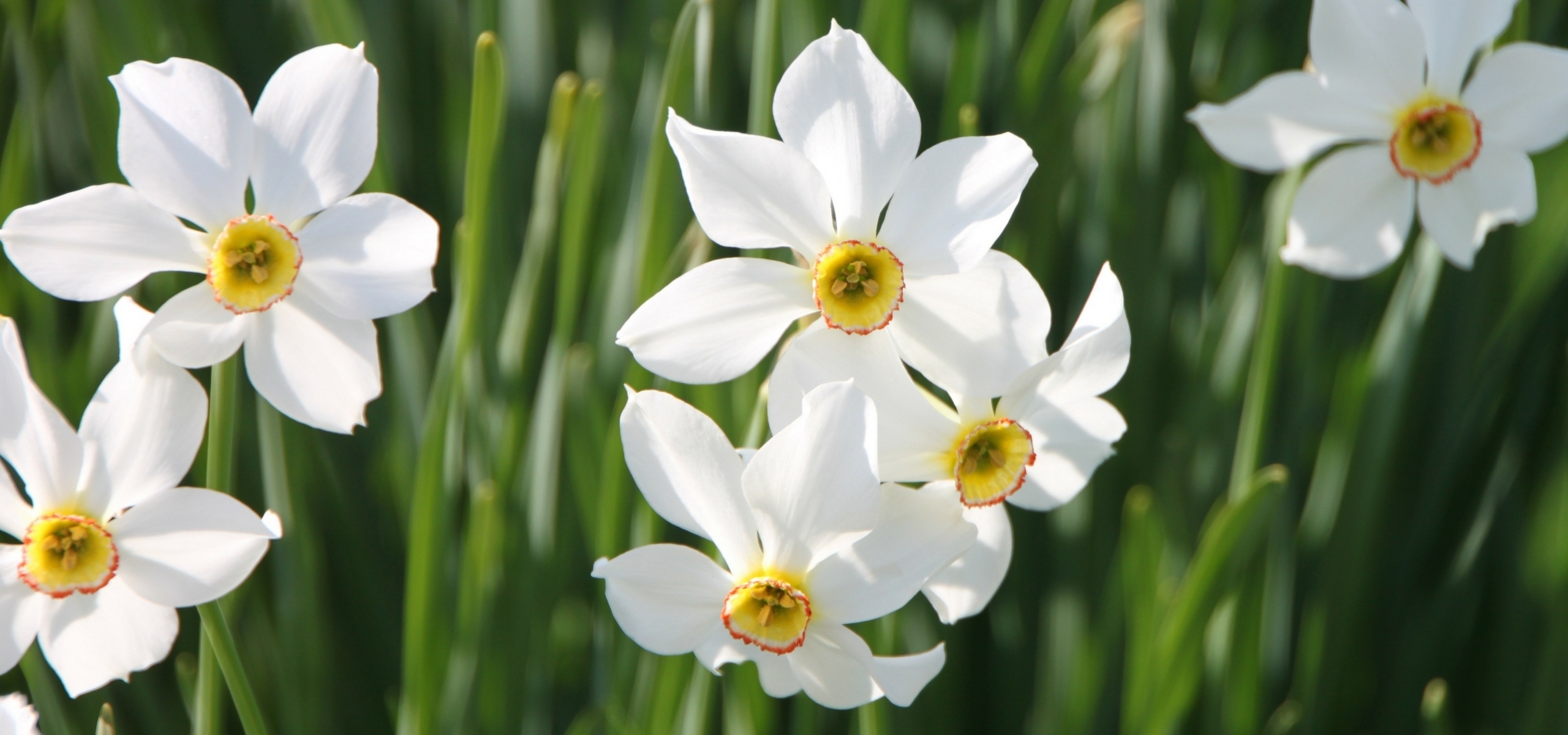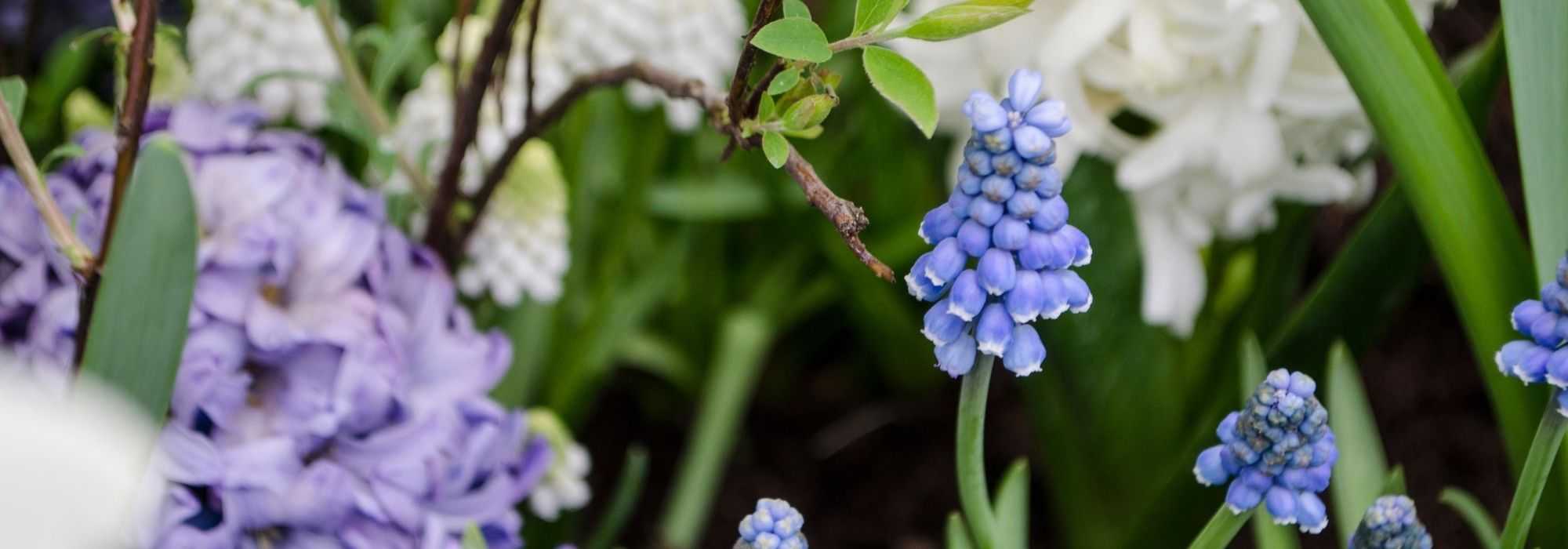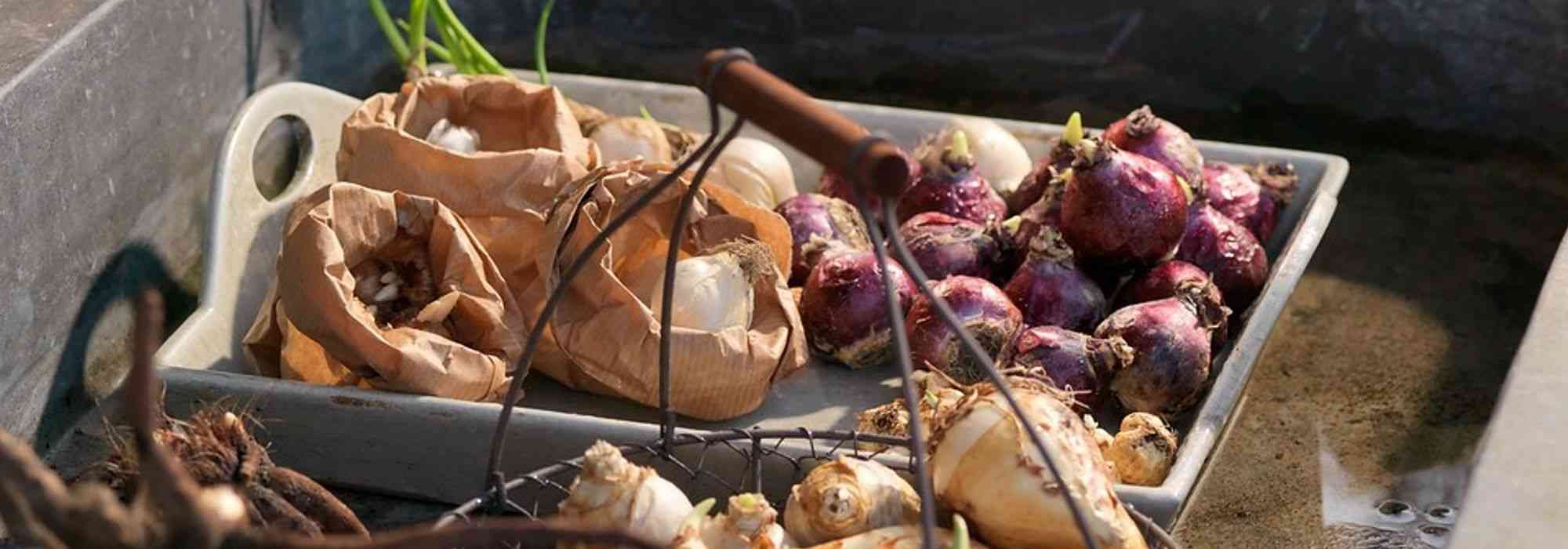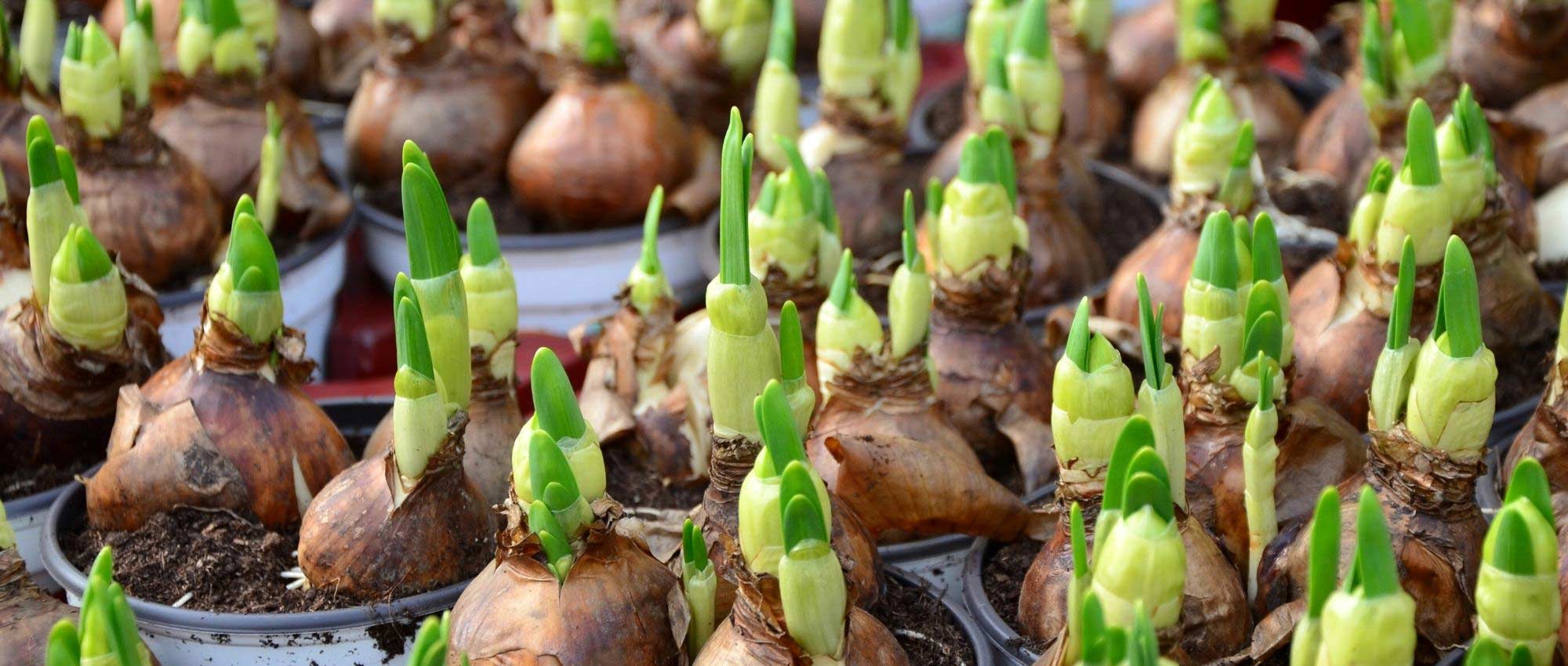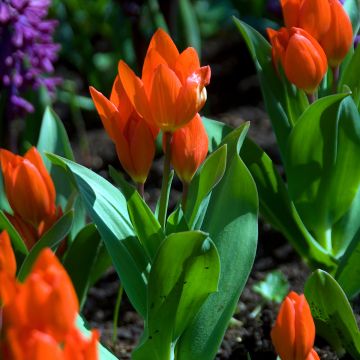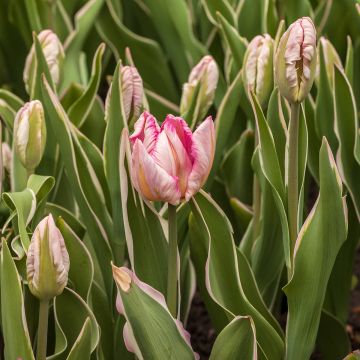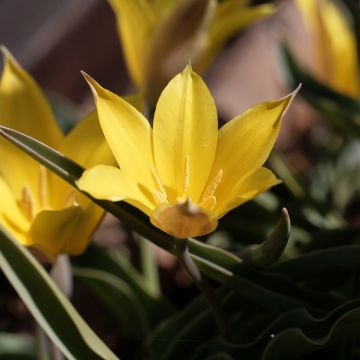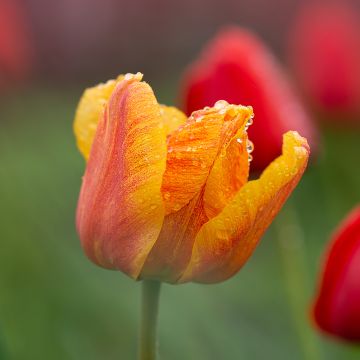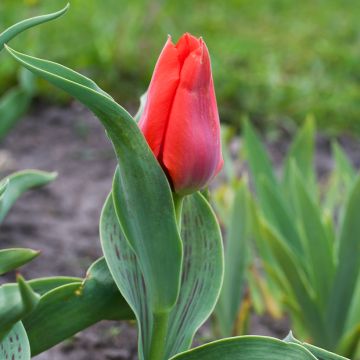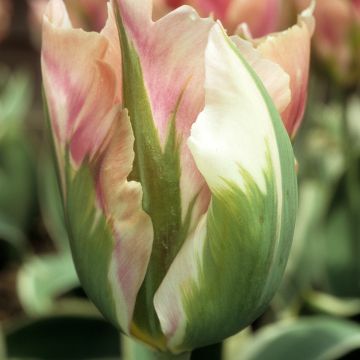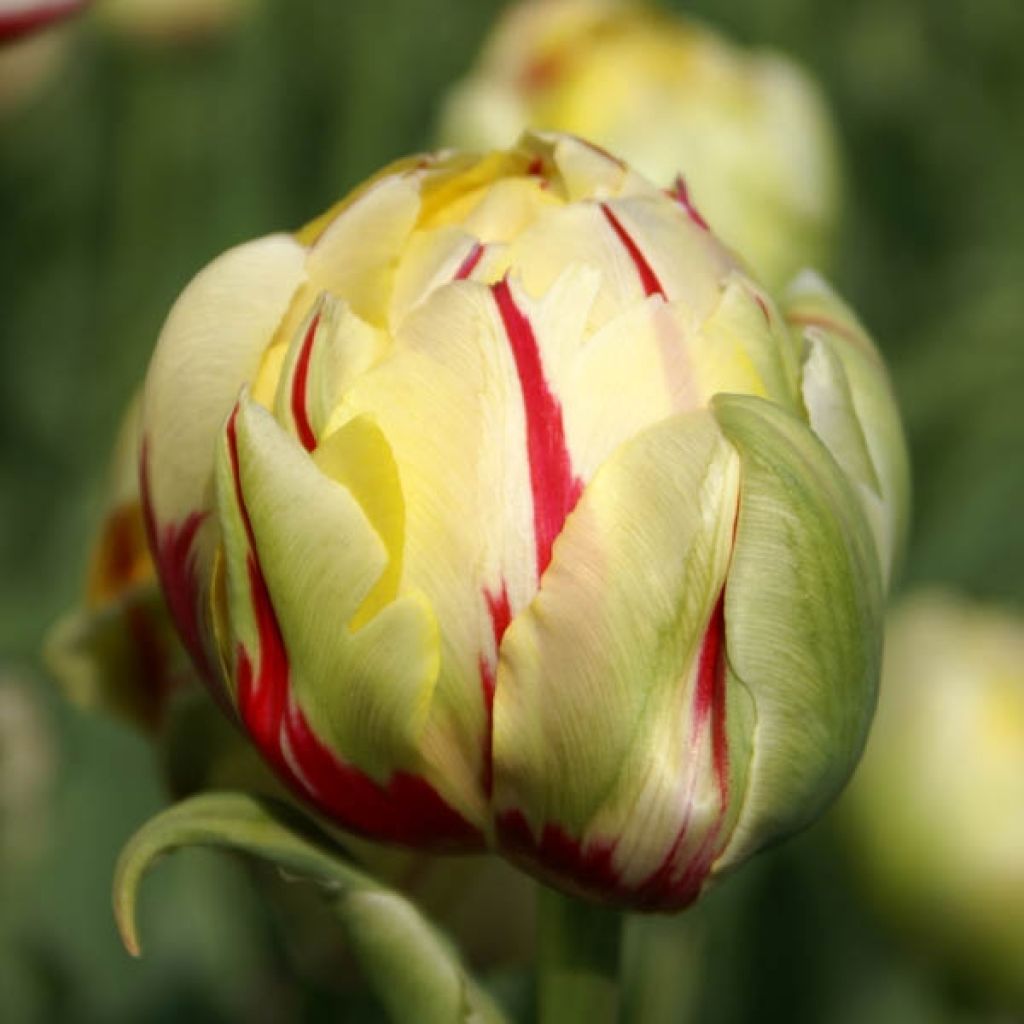

Tulipe Double Glamour
Tulipa Glamour - Double Late Tulip
Tulipa Glamour
Tulip
In addition to the drought, the garden is being plagued by voles, as they have eaten all the tulips. Translation analysis: - The translation accurately conveys the meaning and context of the original text. - The use of "being plagued" effectively captures the idea that the garden is suffering from the presence of voles. - "Voles" is a suitable translation for "campagnoles" in this context. - The use of "eaten" accurately reflects that the voles have consumed the tulips. - The tone of the original text is maintained in the translation.
Annie, 11/07/2015
Special offer!
Receive a €20 voucher for any order over €90 (excluding delivery costs, credit notes, and plastic-free options)!
1- Add your favorite plants to your cart.
2- Once you have reached €90, confirm your order (you can even choose the delivery date!).
3- As soon as your order is shipped, you will receive an email containing your voucher code, valid for 3 months (90 days).
Your voucher is unique and can only be used once, for any order with a minimum value of €20, excluding delivery costs.
Can be combined with other current offers, non-divisible and non-refundable.
Why not try an alternative variety in stock?
View all →This plant carries a 6 months recovery warranty
More information
We guarantee the quality of our plants for a full growing cycle, and will replace at our expense any plant that fails to recover under normal climatic and planting conditions.

Would this plant suit my garden?
Set up your Plantfit profile →
Description
The Double Tulip 'Glamour' is a remarkable spring variety from the group of double late tulips, prized for its large golden-yellow flowers streaked with a fine red vein, reminiscent of peonies. It has a compact and elegant habit, reaching about 40 cm in height, with abundant flowering in April-May. Ideal for flower beds, borders, or containers, it adds a touch of sophistication towards the end of the tulip season. It is best to avoid excessive moisture, especially in heavy soil, to preserve its bulbs year after year. The flowers are perched on sturdy stems that withstand inclement weather well.
The Double Tulip 'Glamour' belongs to the Liliaceae family. A cultivar from the double late tulip group, it stands out from the typical species Tulipa gesneriana, which is mainly single-flowered, due to its very dense double flowering, refined habit of 40 cm, and golden-yellow petals veined with a central red stripe that give it a striking graphic pattern. The habit is compact, upright on a sturdy stem measuring about 40 cm in open ground, with deciduous foliage composed of 4 to 6 medium-green lanceolate leaves approximately 15–20 cm long. Growth is rapid once established, with the plant reaching its maximum height in just a few weeks in spring once the cold period has passed. It does not produce offsets but may occasionally form secondary bulblets after several years in open ground. The flowers, initially closed in a cup shape before partially opening, measure 8 to 10 cm in diameter, composed of numerous overlapping petals, golden yellow with a very distinct central red vein. They appear from late April to May. The root system includes a globose bulb about 5–6 cm in size, with an initial taproot and secondary bulbous roots, ensuring good establishment. Native to Kazakhstan, Uzbekistan, and Tajikistan, this tulip has good hardiness. The double tulip is perfectly suited to large flower beds. Pair it with other tulips to maximise the flowering period of the beds.
In a garden structured by soft volumes and spring light play, the Double Glamour tulip acts like a touch of velvety sunshine, radiating among the tender greens and muted greys of the foliage. In dense borders or refined containers, it catches the eye with the intensity of its golden petals veined in red, which can be paired with the deep purple of the tulip ‘Black Hero’, the coppery pink of ‘La Belle Époque’, or the delicate ivory of ‘Mount Tacoma’ to create a vibrant display. Planted in compact masses among clumps of forget-me-nots, euphorbias, or woolly stachys, it can also be placed in rockeries, flower beds, as well as in pots and planters. These also make lovely cut flowers.
Plant habit
Flowering
Foliage
Botanical data
Tulipa
Glamour
Liliaceae
Tulip
Tulipa Glamour, Tulipa Glamour Unique
Cultivar or hybrid
Planting and care
Planting period
Intended location
Care
Planting & care advice
-
, onOrder confirmed
Reply from on Promesse de fleurs
Similar products
Haven't found what you were looking for?
Hardiness is the lowest winter temperature a plant can endure without suffering serious damage or even dying. However, hardiness is affected by location (a sheltered area, such as a patio), protection (winter cover) and soil type (hardiness is improved by well-drained soil).

Photo Sharing Terms & Conditions
In order to encourage gardeners to interact and share their experiences, Promesse de fleurs offers various media enabling content to be uploaded onto its Site - in particular via the ‘Photo sharing’ module.
The User agrees to refrain from:
- Posting any content that is illegal, prejudicial, insulting, racist, inciteful to hatred, revisionist, contrary to public decency, that infringes on privacy or on the privacy rights of third parties, in particular the publicity rights of persons and goods, intellectual property rights, or the right to privacy.
- Submitting content on behalf of a third party;
- Impersonate the identity of a third party and/or publish any personal information about a third party;
In general, the User undertakes to refrain from any unethical behaviour.
All Content (in particular text, comments, files, images, photos, videos, creative works, etc.), which may be subject to property or intellectual property rights, image or other private rights, shall remain the property of the User, subject to the limited rights granted by the terms of the licence granted by Promesse de fleurs as stated below. Users are at liberty to publish or not to publish such Content on the Site, notably via the ‘Photo Sharing’ facility, and accept that this Content shall be made public and freely accessible, notably on the Internet.
Users further acknowledge, undertake to have ,and guarantee that they hold all necessary rights and permissions to publish such material on the Site, in particular with regard to the legislation in force pertaining to any privacy, property, intellectual property, image, or contractual rights, or rights of any other nature. By publishing such Content on the Site, Users acknowledge accepting full liability as publishers of the Content within the meaning of the law, and grant Promesse de fleurs, free of charge, an inclusive, worldwide licence for the said Content for the entire duration of its publication, including all reproduction, representation, up/downloading, displaying, performing, transmission, and storage rights.
Users also grant permission for their name to be linked to the Content and accept that this link may not always be made available.
By engaging in posting material, Users consent to their Content becoming automatically accessible on the Internet, in particular on other sites and/or blogs and/or web pages of the Promesse de fleurs site, including in particular social pages and the Promesse de fleurs catalogue.
Users may secure the removal of entrusted content free of charge by issuing a simple request via our contact form.
The flowering period indicated on our website applies to countries and regions located in USDA zone 8 (France, the United Kingdom, Ireland, the Netherlands, etc.)
It will vary according to where you live:
- In zones 9 to 10 (Italy, Spain, Greece, etc.), flowering will occur about 2 to 4 weeks earlier.
- In zones 6 to 7 (Germany, Poland, Slovenia, and lower mountainous regions), flowering will be delayed by 2 to 3 weeks.
- In zone 5 (Central Europe, Scandinavia), blooming will be delayed by 3 to 5 weeks.
In temperate climates, pruning of spring-flowering shrubs (forsythia, spireas, etc.) should be done just after flowering.
Pruning of summer-flowering shrubs (Indian Lilac, Perovskia, etc.) can be done in winter or spring.
In cold regions as well as with frost-sensitive plants, avoid pruning too early when severe frosts may still occur.
The planting period indicated on our website applies to countries and regions located in USDA zone 8 (France, United Kingdom, Ireland, Netherlands).
It will vary according to where you live:
- In Mediterranean zones (Marseille, Madrid, Milan, etc.), autumn and winter are the best planting periods.
- In continental zones (Strasbourg, Munich, Vienna, etc.), delay planting by 2 to 3 weeks in spring and bring it forward by 2 to 4 weeks in autumn.
- In mountainous regions (the Alps, Pyrenees, Carpathians, etc.), it is best to plant in late spring (May-June) or late summer (August-September).
The harvesting period indicated on our website applies to countries and regions in USDA zone 8 (France, England, Ireland, the Netherlands).
In colder areas (Scandinavia, Poland, Austria...) fruit and vegetable harvests are likely to be delayed by 3-4 weeks.
In warmer areas (Italy, Spain, Greece, etc.), harvesting will probably take place earlier, depending on weather conditions.
The sowing periods indicated on our website apply to countries and regions within USDA Zone 8 (France, UK, Ireland, Netherlands).
In colder areas (Scandinavia, Poland, Austria...), delay any outdoor sowing by 3-4 weeks, or sow under glass.
In warmer climes (Italy, Spain, Greece, etc.), bring outdoor sowing forward by a few weeks.






























